

Dussehra symbolizes the triumph of good over evil. The word 'Dussehra' is derived from the words 'dus' and 'hara', where 'dus' means ten and 'hara' means annihilated. On this day, Lord Rama slew the demon king of Lanka, Ravana, after a fierce battle. This festival is celebrated on the 10th day of Shardiya Navratri. If you want to know the date of Dussehra this year, check it out.
History of Dussehra
The history of Dussehra goes back to the Ramayana. It describes the story of Lord Rama, who defeated the demon king, Ravana, in Traeayuga. The king of Lanka, Ravana, had abducted Sita, Lord Rama’s wife, leading to a battle with Lord Rama. Rama, accompanied by his younger brother Lakshmana, disciple Hanuman, and an army of monkeys, travelled to Lanka to bring back Sita. He worshipped Durga and emerged victorious eventually, marking the day as Vijayadashami or Dussehra.
The Significance of Dussehra in Indian Culture
Dussehra personifies India's rich cultural tapestry and traditions. This signifies the triumph of good over evil and teaches us that righteousness always prevails.
The Dussehra celebration unites communities across India. The statues of Ravana, Meghnad, and Kumbhakarna are set on fire. This day also marks Goddess Durga's win over the mighty buffalo demon Mahishasura, underpinning the might of feminine power. People celebrate this occasion with fervor, forgetting all the regional and cultural differences.
Why is Dussehra Celebrated?
It is celebrated differently in different parts of the nation. So, going forward, we will delve into how the festival is celebrated in the different regions of India:
North India
In northern India, Dussehra signifies the spirit of “Good always prevails.” The depiction of Rama's life in Ram Leela starts ten days before Dussehra. Numerous theatre groups in villages, cities, and suburbs of North India perform this. Among these celebrations, it's a tradition for many to give gifts on Dussehra to honour the occasion.
South India
In Tamil Nadu, Dussehra celebrations start nine days before Dussehra. These nine days are devoted to the worship of the 3 main deities of Hinduism. Goddess Lakshmi is adored in the first 3 days, as she is the provider of wealth and prosperity, while Saraswati is prayed for the subsequent 3 days, called the deity of knowledge and art. The last 3 days are dedicated to Goddess Shakti, the goddess of valour. In Tamil Nadu, Karnataka, and Andhra Pradesh, miniature statues and beautiful dolls are set up in artificial stages in homes, usually known as 'Bommai Kolu'.
Eastern India
In the Eastern part of the country, Dussehra is celebrated as Durga's victory over the demon Mahishasura. It is supposed that after a fierce battle of nine days, the goddess subdued Mahishasura and slayed her, so this day is famously known as Vijayadashami. Idols of Durga are immersed in waterbodies with great reverence. In Orissa, the festival is called Vijoja Dashami. This day is marked as the conclusion of Sharadiya Durga Puja.
West India
In Maharashtra, Dussehra is related to numerous legends besides Rama. On Dussehra, the flour tree is adored, and its leaves are gifted to the dear ones, with Dussehra's gifts and sweets being considered a good omen. After completing 12 years of exile, Pandavas recovered their weapons from under a Shami tree, where they had stored them. The nine days before Dussehra are famous here as Navratri. The idols of the Goddess installed on the initial day of Navratri are engrossed in water on Dussehra. Therefore, Dussehra has different kinds of importance in several regions of India.
Here are the places you can visit to be a part of the famous Dussehra celebrations,
1. Kolkata

From dusk until early morning, the entire city of “Kolkata” is decorated with lovely lightning. It has various theme-based pandals, and Durga is worshipped for five days. Throughout your visit, you will be mesmerized by the plethora of street food, the dance in traditional attire, the extraordinary inventiveness of the decorated pandals, and the rich culture. Rasogolla is the most widely distributed sweet in West Bengal on the occasion of Durga Puja.
2. Varanasi

Varanasi is the home of the Kashi Vishwanath temple. Various traditional customs are observed on the occasion of Dussehra. The oldest Ramlila performances, over 200 years, can be seen here. The entire city is adorned by scenes that portray historical places like Ayodhya, Lanka, etc. The spectators follow the actors as they go from one site to another to play the narrative. The aartis on the ghats, dips in the Ganga, and many other essential rituals occur on Dussehra in Varanasi.
3. Mysore

Mysore’s Dasara festivity is very different from any other celebration of this festivity. Cultural performances, military parades, and sporting competitions are conducted. It starts at the Mysore Palace and ends at Bannimantapa, the site of the worship of the Banni tree. The Mysuru Palace is decorated, and the royal family attends a special Durbar held there. Dasara is celebrated rather lavishly at this place.
4. Delhi

The Ram Lila, held at the Ramlila Maidan in Old Delhi, is the most famous event in the nation. Navratri, which lasts nine days, brings cheer to the city. During these days, everyone in Delhi munches vegetarian food, and you might watch theatrical performers perform plays that recount the tale of Lord Rama and how he defeated Ravana.
5. Kullu Dusshera

Kullu Dussehra begins when the Dussehra concludes in other parts on Vijay Dashami. The key ceremony, known as Lankadahan, is conducted over a week with over 250 congregated deities at the Beas Bank. Though Ram’s victory over Ravan is encompassed in the celebration’s legend, Dussehra here does not just revolve around this occasion.
6. Bastar Dussehra

This Durga Puja is celebrated in Bastar for 2.5 months, from August to October, making it the most extended Dussehra celebration. Hareli Amavasya marks the beginning of Bastar Dussehra. The Rath Yatra is the most anticipated occasion. From the Baidarguda forest in Bilouri, a 3-and-a-half-foot-long and closely 3-foot-round Sal tree in Turlu Khetla shape is usually carried. The celebration has rigorous rituals; for example, a girl swings on a bed of thorns, and a boy watches while being buried on shoulders for 9 days.
7. Kota
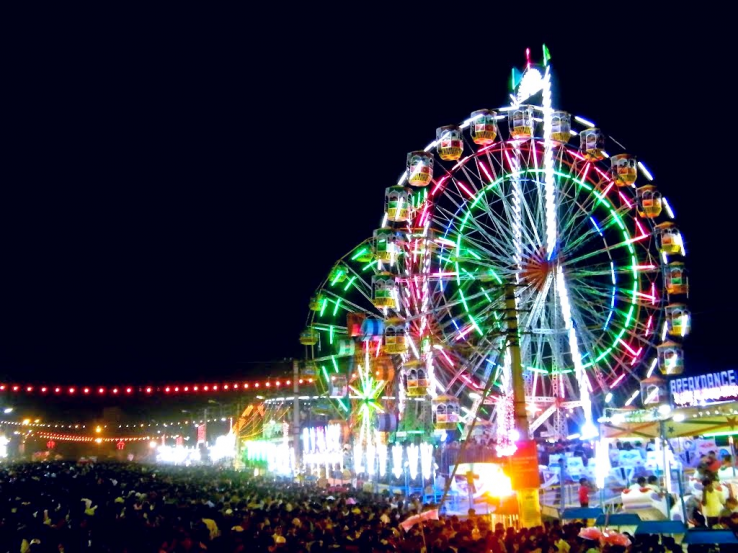
Kota takes a much more exclusive approach to celebrating Dussehra. If you attend fairs here, you may see cultural performers and regional artists! You can also hear the chants of Sri Ram echoing in the background. The local villagers disguise themselves in their traditional attire. Ravana’s statues are set on fire to signal the festival’s conclusion.
8. Hyderabad
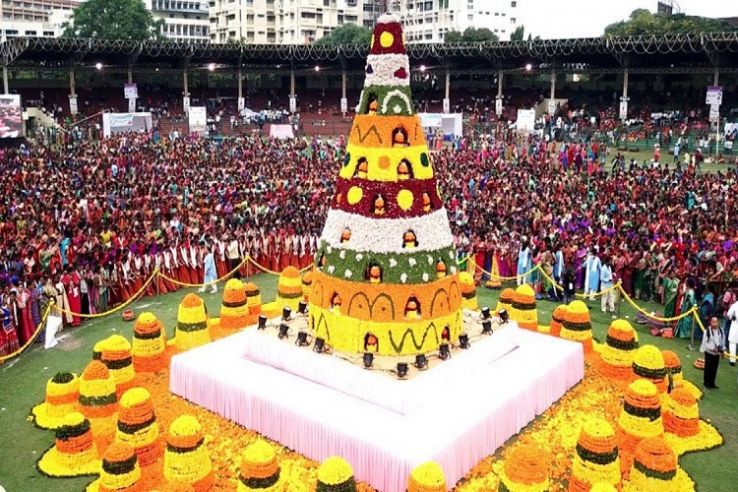
Bathukamma starts on Mahalaya Amavasya, which coincides with Navratri and ends on Durgasthami. Throughout the nine days, women make little “Bathukammas” bright flowers proficiently arranged in circular rows on a brass plate, dance around them every evening, and then plunge them in a neighbouring pond.
9. Coorg
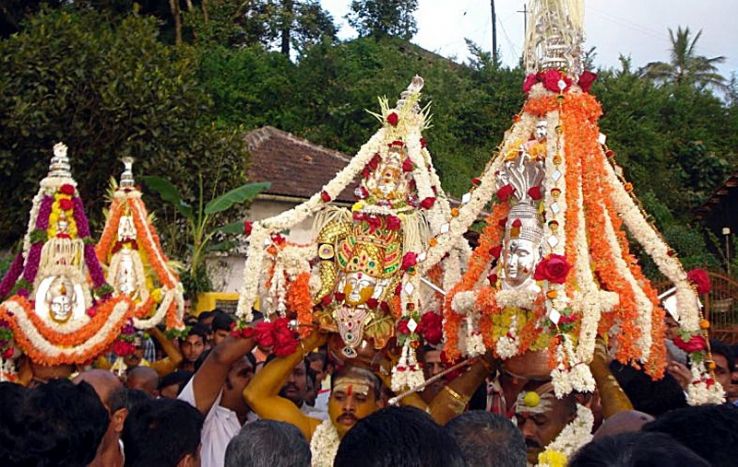
Coorg Dussehra celebration is one of the best hill stations in South India. The Madikeri Dasara festival, which is celebrated, starts with the traditional karaga folk dances. The Pandavas’ wife, Draupadi, is honoured at the ceremonies. To welcome the 10th day, the celebration lasts the whole 9th day. The Madikeri Dasara is a 100-year-old custom, and its preparation starts 3 months prior to the main event.
10. Kulasekarapattinam

Dussehra is celebrated unusually in Kulasekarapattinam in Tamil Nadu. The Kulasai Mutharamman Devi Temple is an important structure dating back to the era of King Maravarman Kulasekaran. It is believed that the Goddesses guard the community and its inhabitants and assist their followers when required. Devotees travel from several areas to honour the Goddess. Furthermore, persons are seen roaming around dressed as soldiers, police officers, physicians, etc.
Recommended For You
-
 Best Places to Stay During Kumbh 2025: From Tents to Luxury Hotels
Best Places to Stay During Kumbh 2025: From Tents to Luxury Hotels
-
 The Ultimate Guide to Maha Kumbh Mela 2025 at Prayagraj
The Ultimate Guide to Maha Kumbh Mela 2025 at Prayagraj
-
 Understanding the Importance of the Sangam: The Confluence of Faith
Understanding the Importance of the Sangam: The Confluence of Faith
-
 The History and Mythology of Kumbh Mela: A Journey Through Time
The History and Mythology of Kumbh Mela: A Journey Through Time
-
 Best Places to Eat in Goa: Indulge in a Culinary Delight
Best Places to Eat in Goa: Indulge in a Culinary Delight
-
 The Future of Drone Tourism: How Drones are Changing the Travel Industry
The Future of Drone Tourism: How Drones are Changing the Travel Industry
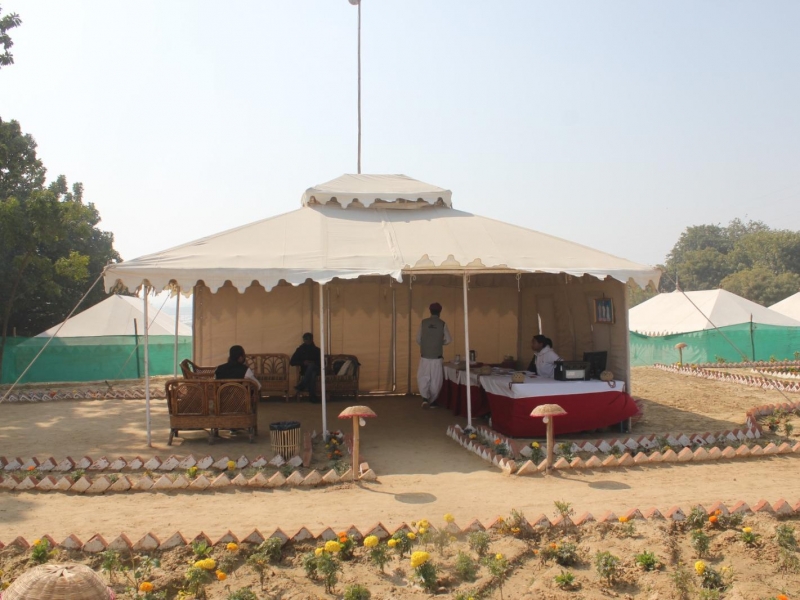
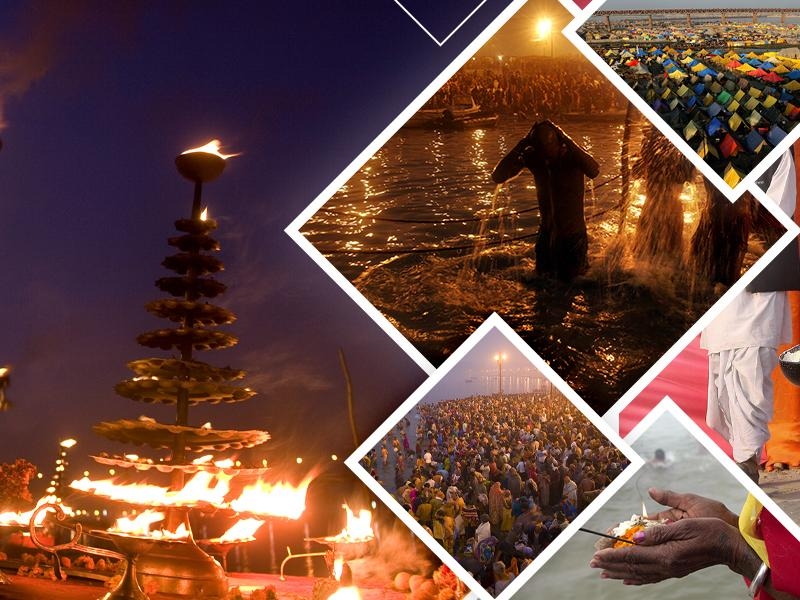













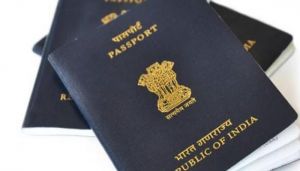

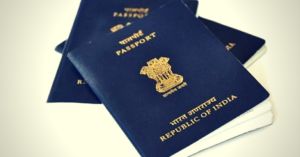




Author Bio